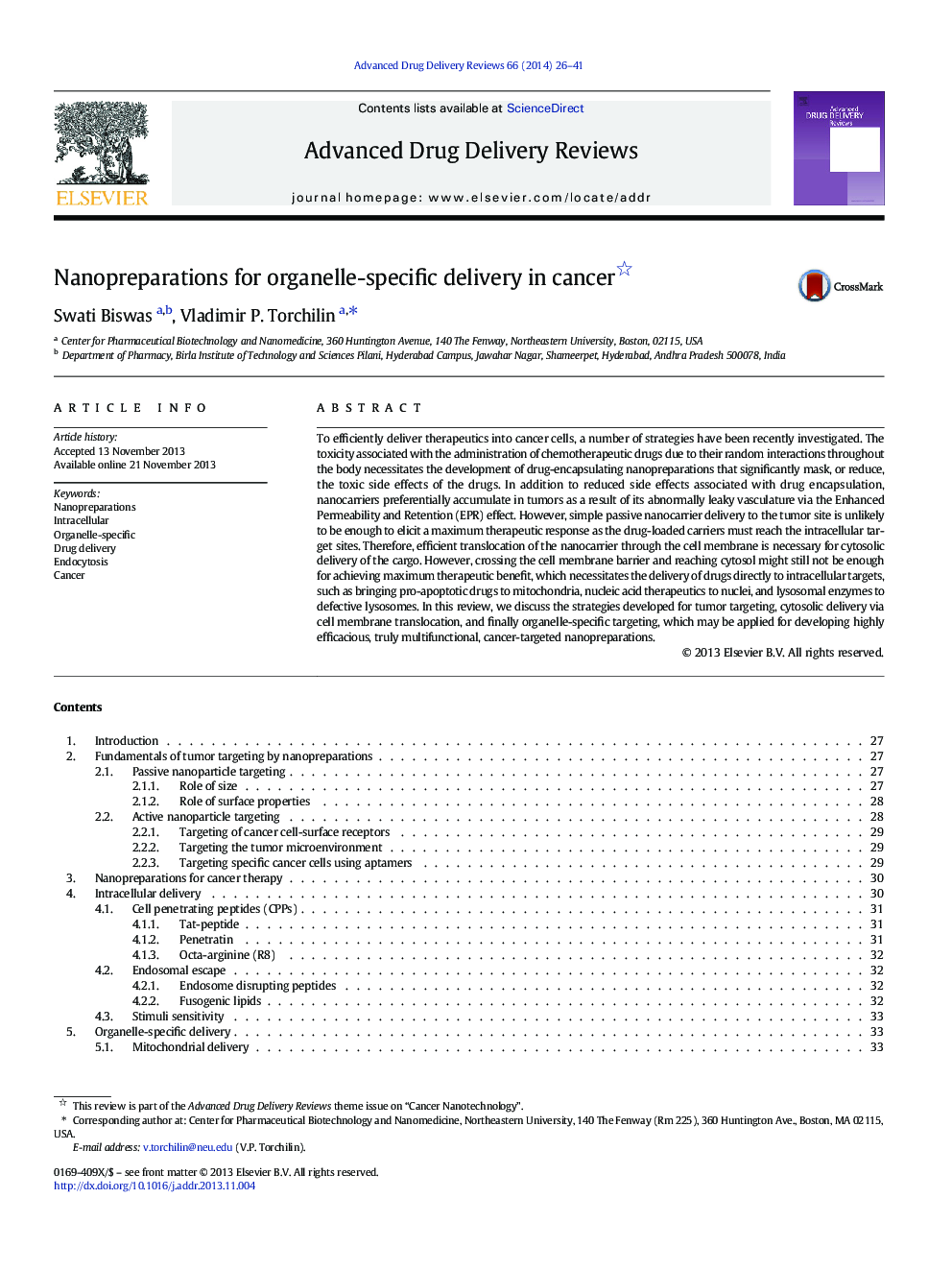| Article ID | Journal | Published Year | Pages | File Type |
|---|---|---|---|---|
| 2070910 | Advanced Drug Delivery Reviews | 2014 | 16 Pages |
To efficiently deliver therapeutics into cancer cells, a number of strategies have been recently investigated. The toxicity associated with the administration of chemotherapeutic drugs due to their random interactions throughout the body necessitates the development of drug-encapsulating nanopreparations that significantly mask, or reduce, the toxic side effects of the drugs. In addition to reduced side effects associated with drug encapsulation, nanocarriers preferentially accumulate in tumors as a result of its abnormally leaky vasculature via the Enhanced Permeability and Retention (EPR) effect. However, simple passive nanocarrier delivery to the tumor site is unlikely to be enough to elicit a maximum therapeutic response as the drug-loaded carriers must reach the intracellular target sites. Therefore, efficient translocation of the nanocarrier through the cell membrane is necessary for cytosolic delivery of the cargo. However, crossing the cell membrane barrier and reaching cytosol might still not be enough for achieving maximum therapeutic benefit, which necessitates the delivery of drugs directly to intracellular targets, such as bringing pro-apoptotic drugs to mitochondria, nucleic acid therapeutics to nuclei, and lysosomal enzymes to defective lysosomes. In this review, we discuss the strategies developed for tumor targeting, cytosolic delivery via cell membrane translocation, and finally organelle-specific targeting, which may be applied for developing highly efficacious, truly multifunctional, cancer-targeted nanopreparations.
Graphical abstractFigure optionsDownload full-size imageDownload high-quality image (234 K)Download as PowerPoint slide
